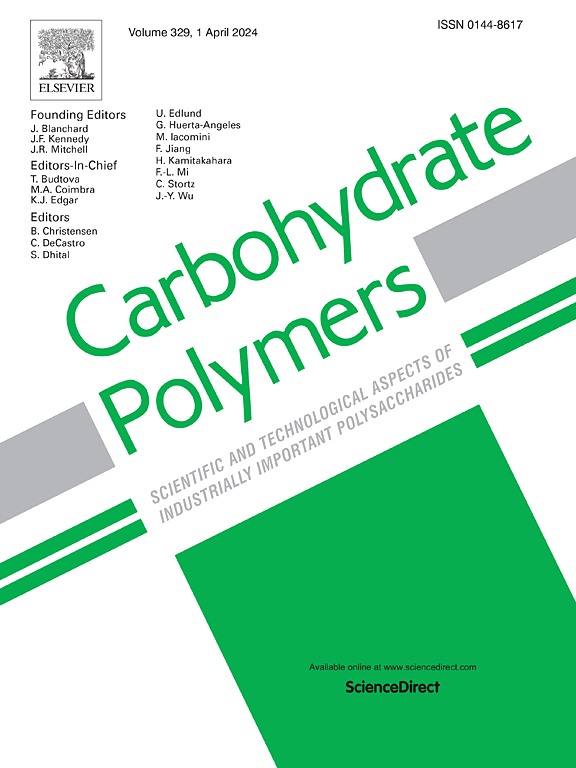Impact of varying chain-length fatty acids on the retrogradation of mung bean starch-soybean protein isolate gels: Induced changes in morphology, rheology, and water distribution
IF 10.7
1区 化学
Q1 CHEMISTRY, APPLIED
引用次数: 0
Abstract
This study systematically evaluated the impact of different fatty acids (LA, lauric acid; MA, myristic acid; PA, palmitic acid; SA, stearic acid; 5 % w/w) with soybean isolate protein (SPI, 10 % w/w) on the structural and anti-retrogradation properties of mung bean starch gels. The results showed that fatty acids and SPI interacted with starch during the pasting process, disrupted the integrity network, reduced the order and viscoelasticity of the system, and depended on the length of carbon chains. Notably, under the emulsification of SPI, long-chain fatty acids (e.g., palmitic acid 64.33 % and stearic acid 65.57 %) formed complexes with starch, significantly limiting their release. During 30 days of storage, SPI and fatty acids synergistically retained moisture (e.g., 18 % lower syneresis in ternary gels vs. control starch gels) and reduced chromatic aberration (ΔE < 5.7) and hardness (282.06 g–388.07 g). This was favorable for maintaining the quality of the gelled food during its shelf life and promoted the precise application of fatty acids in the gel system.

不同链长脂肪酸对绿豆淀粉-大豆分离蛋白凝胶退化的影响:诱导形态、流变学和水分分布的变化
本研究系统评价了不同脂肪酸(LA、月桂酸;MA,肉豆蔻酸;PA:棕榈酸;SA,硬脂酸;5% w/w)和大豆分离蛋白(SPI, 10% w/w)对绿豆淀粉凝胶的结构和抗退化性能的影响。结果表明,脂肪酸和SPI在糊化过程中与淀粉相互作用,破坏了体系的完整性网络,降低了体系的有序度和粘弹性,并依赖于碳链的长度。值得注意的是,在SPI的乳化作用下,长链脂肪酸(如棕榈酸64.33%和硬脂酸65.57%)与淀粉形成配合物,明显限制了它们的释放。在30天的储存期间,SPI和脂肪酸协同保持水分(例如,三元凝胶的协同作用比对照淀粉凝胶低18%)并降低色差(ΔE <;5.7)和硬度(282.06 g - 388.07 g)。这有利于保持凝胶食品在保质期内的质量,促进了脂肪酸在凝胶体系中的精确应用。
本文章由计算机程序翻译,如有差异,请以英文原文为准。
求助全文
约1分钟内获得全文
求助全文
来源期刊

Carbohydrate Polymers
化学-高分子科学
CiteScore
22.40
自引率
8.00%
发文量
1286
审稿时长
47 days
期刊介绍:
Carbohydrate Polymers stands as a prominent journal in the glycoscience field, dedicated to exploring and harnessing the potential of polysaccharides with applications spanning bioenergy, bioplastics, biomaterials, biorefining, chemistry, drug delivery, food, health, nanotechnology, packaging, paper, pharmaceuticals, medicine, oil recovery, textiles, tissue engineering, wood, and various aspects of glycoscience.
The journal emphasizes the central role of well-characterized carbohydrate polymers, highlighting their significance as the primary focus rather than a peripheral topic. Each paper must prominently feature at least one named carbohydrate polymer, evident in both citation and title, with a commitment to innovative research that advances scientific knowledge.
 求助内容:
求助内容: 应助结果提醒方式:
应助结果提醒方式:


